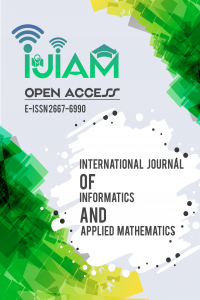Denoising of Speech Signal Using Decision Directed Approach
Denoising of Speech Signal Using Decision Directed Approach
This article deals with the problem of improving speech in noisy environments using the decisional approach (DD). The decision approach (DD) uses a priori estimation of the signal-to-noise ratio (SNR) for speech improvement and is used to estimate the time-varying noise spectrum, which results in better performance in terms of intelligibility and a reduction in musical noise. In this article, we propose recursive estimators for the a priori SNR and the spectral components of speech. We introduce a new statistical model which takes into account the temporal correlation between the successive vocal spectral components, while keeping the resulting algorithms simple. This model provides new information on the DD approach and allows the extension of existing speech improvement algorithms.
Keywords:
Spectral Attenuation, Signal and Noise, Suppression Rule, SNR HRNR, TSNR,
___
- [1] Ephraim (Y.) et Mallah (D.), « Speech enhancement using a minimum mean-square error short-time spectral amplitude estimator », IEEE Transactions on Acoustics, Speech and Signal Processing, 32(6), December 1984
- [2] S. Shekar and D.J. Ravi, “Denoising of a Speech Signal using Wiener Filter”, In: Proc. of the International Conf. on Current Trends in Engineering, Science and Technology, 2017.
- [3] Loizou. P. C and Kim. G, “Reasons why current speech-enhancement algorithms do not improve speech intelligibility and suggested solutions,” IEEE Transactions on Audio, Speech, and Language Processing, vol.19, no.1, pp.47-56, 2011
- [4] Kim. G, “Binary Mask Criteria Based on Distortion ConstraintsInduced by a Gain Function for Speech Enhancement,”IEEETransactions on Smart Processing and Computing, vol.2, no., pp. 197-202, 2013
- [5] Scalart (P.) et Filho (J. V.). « Speech enhancement based on a priori signal to noise estimation ». Dans IEEE International Conference on Acoustics, Speech and Signal Processing, volume 2, p. 629–632, May 1996.
- [6] Y. Zhao, Z.Q. Wang, and D. Wang, “A Two-Stage Algorithm for Noisy and Reverberant Speech Enhancement”, In: Proc. of the International Conference on Acoustics, Speech and Signal Processing, pp.5580-5584, 2017.
- [7] Plapous (C.), Marro (C.) et Scalart (P.). « Speech enhancement using harmonic regeneration ». Dans IEEE International Conference on Acoustics, Speech, and Signal Processing, Philadelphie, 2005
- [8] Jie Wang, Chengcheng Yang Linhuang Yan, Manlu Huang and Jinqiu Sang† Guangzhou University, Guangzhou, ChinaSpeech Enhancement Algorithm of Binary MaskEstimation Based on a Priori SNR ConstraintsProceedings, APSIPA Annual Summit and Conference 2018
- [9] Plapous (C.), Marro (C.) et Scalart (P.). « A two-step noise reduction technique ». Dans IEEE International Conference on Acoustics, Speech, and Signal Processing, volume 1, 2004.
- [10] Plapous (C.). Traitements pour la réduction de bruit. Application à la communication parlée. Thèse de doctorat, Université de Rennes 1, 2005.
- [11] Scalart (P.) et Lepauloux (L.). « On the convergence behavior of recursive adaptive noise cancellation structure in the presence of crosstalk ». Dans Sensor Signal Processing for Defence conference, London, September 2010.
- [12] Lepauloux (L.), Scalart (P.) et Marro (C.). « Annulation de bruit à faible distorsion », 2009.
- [13] [Crochiere 1983] R. E. Crochiere, et L. R. Rabiner, “Multirate Digital Signal Processing,” Prentice-Hall, Première édition, 1983.
- [14] ITU-T Recommandation, Telephone Transmission Quality – Objective MeasuringApparatus, pp. 56, March (1996).
- Başlangıç: 2018
- Yayıncı: International Society of Academicians
Sayıdaki Diğer Makaleler
Denoising of Speech Signal Using Decision Directed Approach
Abdelli OUARDİA, Fatiha MERAZKA
Latency and Energy Efficient Routing-Aware TDMA for Wireless Sensor Networks
İslam Amine BOUCHEDJERA, Lemia LOUAİL
Automated Facial Expression Recognition Using Deep Learning Techniques: An Overview
